Avocado & Negitoro Don is a delicious Japanese tuna rice bowl, rich in protein and healthy fats. It’s a quick, no-nonsense recipe to prepare and enjoy on a busy weeknight!
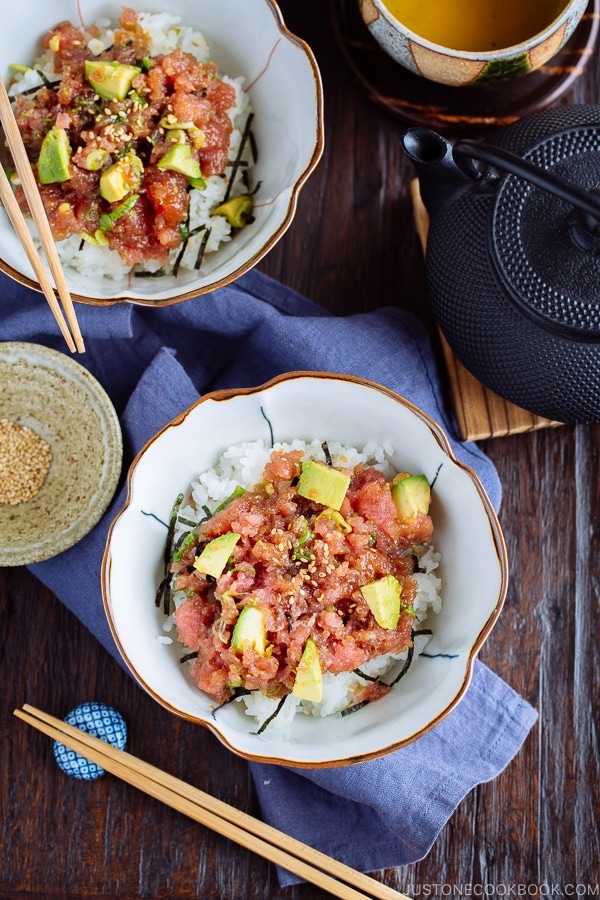
Donburi, or Japanese rice bowl dish, is the standard quick lunch or dinner in a Japanese household. Sometimes shortened to just “don 丼”, it’s a bowl of rice topped with fish or meat, veggies, and a simple sauce. When you have leftover ingredients you are trying to use up, you can cook donburi for the family.
You may have already tried some of the popular donburi one-bowl dishes like Oyakodon (chicken and egg bowl) and Gyudon (Japanese beef bowl). But if you have access to sashimi-grade seafood, try today’s dish, Avocado & Negitoro Donburi (アボカドネギトロ丼) – one of our family’s all-time-favorite rice bowls.
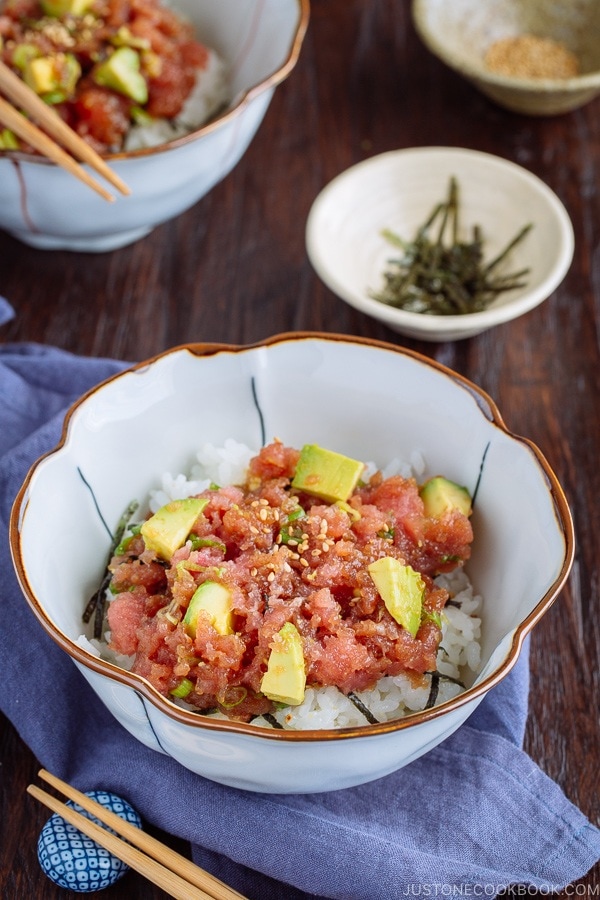
What is Negitoro?
Negitoro (ネギトロ) is simply the leftover tuna that can’t be sliced nicely into sashimi slices. It’s the deliciously, fatty meat that is scraped off around the bones and off the skin. It’s like a minced tuna that is rich in flavor, but not pretty enough to serve on its own. The negitoro is generally mixed with green onion and added into a rice bowl, to create a popular Japanese comfort food.
Not All Negitoro Comes from Toro
It’s easy to mistake that negitoro comes from toro (the fatty tuna) as the word negitoro seems like it stands for negi (green onion) and toro. And negitoro always includes chopped green onion.
However, it’s actually not true. The word “negitoro” came from the Japanese verb “negitoru” – the action of scraping off the meat around the bones and the skin.
Later on, everyone started to use the word negitoro for the scraped tuna pieces. So, whether it is from toro (fatty tuna), or nakaochi (backbone meat), or akami (red lean tuna), it’s still negitoro.
Since negitoro from fatty tuna of bluefin tuna is hard to come by, you’ll find a combination of negitoro from different tunas (bigeye, yellowfin, and Southern bluefin tuna) and oil (to make it fatty) most of the time instead. Low-quality negitoro is a combination of albacore and yellowfin tuna with oil.
Popular Dishes with Negitoro
- Negitoro Sushi (gunkan-style – the nori is around the rice, looks like a battle fish)
- Negitoro Maki (thin sushi rolls)
- Negitoro Don
Combination of Negitoro & Avocado
You can enjoy negitoro by itself, but tossing in some diced avocado adds an excellent texture, color, and flavor to the rice bowl.
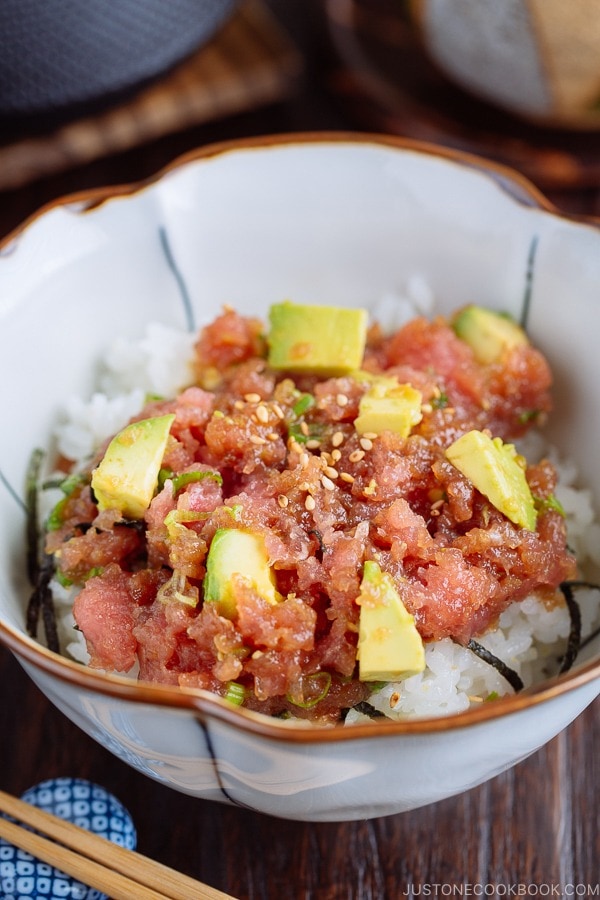
The Delicious Tare (Sauce) for Avocado & Negitoro Donburi
My mother used to make this donburi dish with a light savory tare (sauce) using mentsuyu (noodle soup base) and soy sauce. If you always have your homemade mentsuyu or store-bought bottle of mentsuyu in the refrigerator, whisking together the sauce is a breeze.
Very similar to a poke bowl, this Avocado & Negitoro Donburi is just as simple and satisfying as a happy bowl it could be.
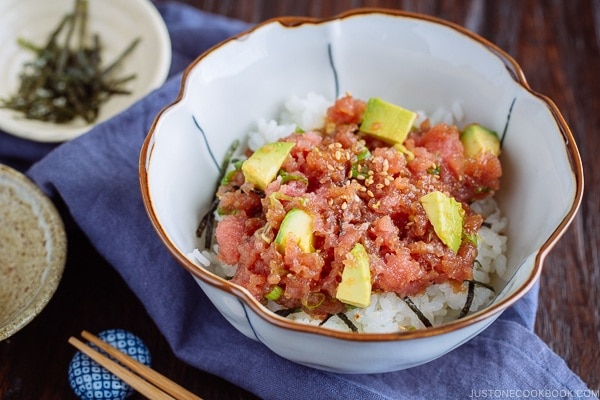
Don’t want to miss a recipe? Sign up for the FREE Just One Cookbook newsletter delivered to your inbox! And stay in touch with me on Facebook, Pinterest, and Instagram for all the latest updates.
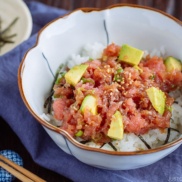
Avocado & Negitoro Donburi
Ingredients
- ½ lb maguro tataki (chopped tuna for negitoro)
- 1 avocado (cut into ¼-inch cubes; see Notes)
- 1 green onion/scallion (use if the negitoro package didn't come with green onions; sliced thin)
- 2 servings cooked Japanese short-grain rice (typically 1⅔ cups (250 g) per donburi serving)
- ¼ cup shredded nori seaweed (kizami nori) (to garnish)
- 1 tsp toasted white sesame seeds
For the Seasonings
- 2 Tbsp mentsuyu (concentrated noodle soup base)
- 2 tsp soy sauce
Instructions
- Before You Start: Gather all the ingredients. For the steamed rice, please note that 1½ cups (300 g, 2 rice cooker cups) of uncooked Japanese short-grain rice yield 4⅓ cups (660 g) of cooked rice, enough for 2 donburi servings (3⅓ cups, 500 g). See how to cook short-grain with a rice cooker, pot on the stove, Instant Pot, or donabe.
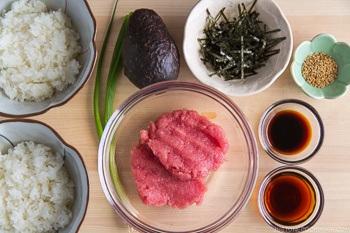
- Divide 2 servings cooked Japanese short-grain rice into individual (large) donburi bowls, sprinkle 1 tsp toasted white sesame seeds on top, and let cool. Chop 1 green onion/scallion.
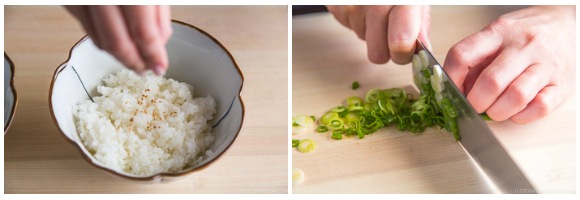
- Slice open 1 avocado and remove the pit.

- Cut the avocado into cubes and scoop out the avocado into a bowl. See how in my tutorial How to Cut an Avocado.

- Add ½ lb maguro tataki (chopped tuna for negitoro), the avocado cubes, and the green onion slices to the bowl. Add 2 tsp soy sauce and 2 Tbsp mentsuyu (concentrated noodle soup base) and gently mix together without smashing the avocado.

- Sprinkle some ¼ cup shredded nori seaweed (kizami nori) on top and serve the negitoro mixture on top of the steamed rice. Garnish with more nori and green onion. Your Avocado and Negitoro Donburi is now ready to enjoy!

Nutrition
Editor’s Note: This post was originally published on February 11, 2011. The post has been updated with new images and the recipe is slightly adjusted.
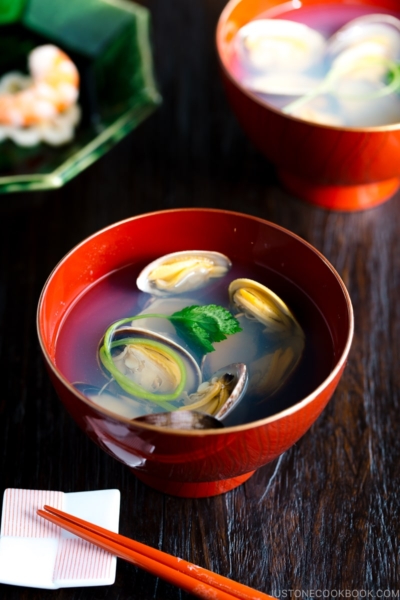
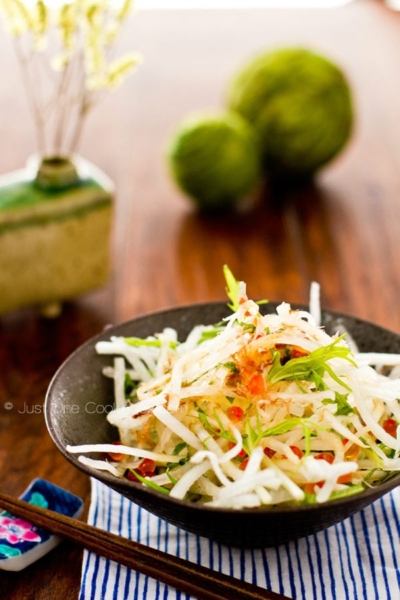
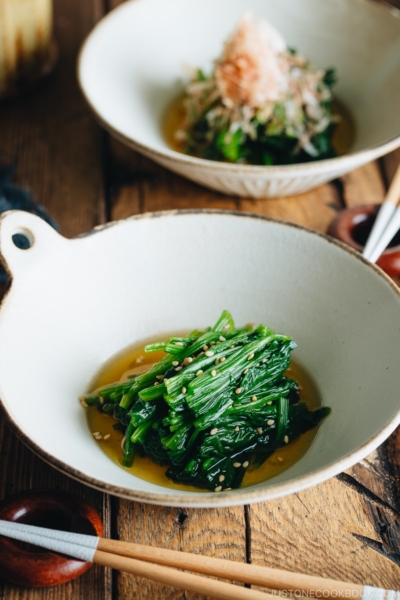
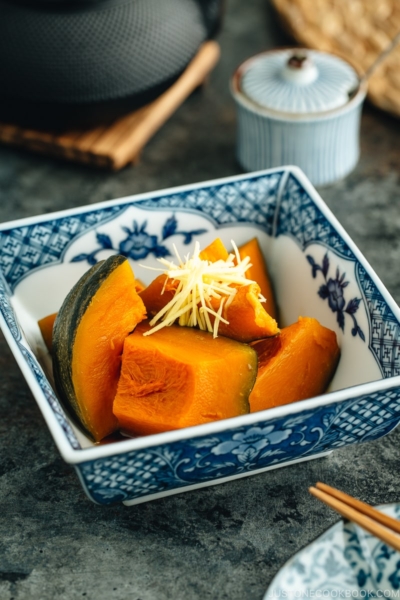
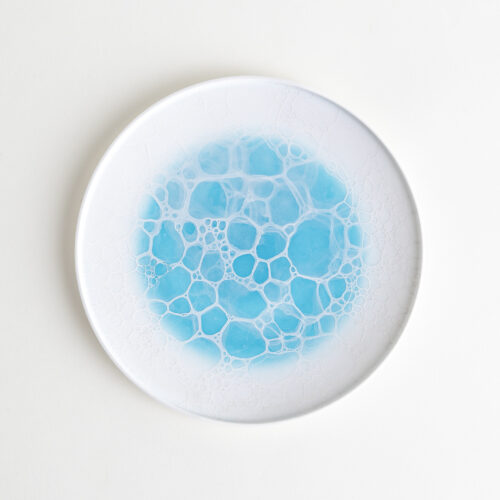
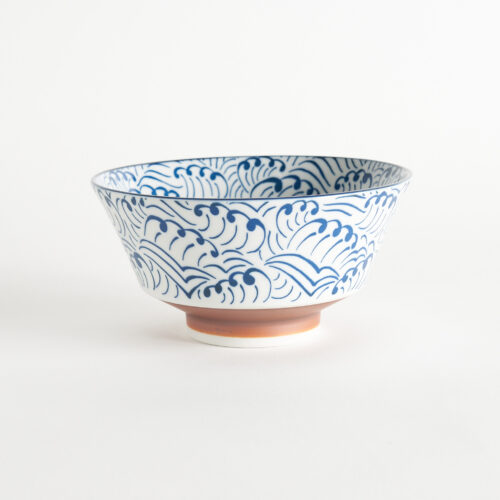
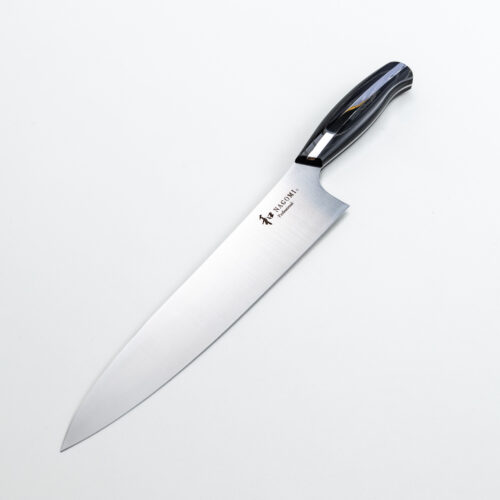
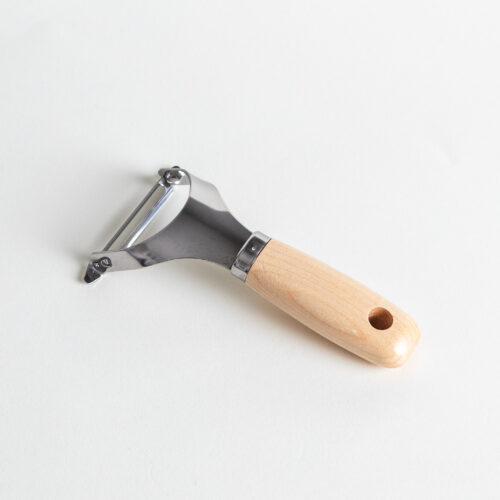
Is the mentsuyu supposed to be diluted (for donburi) or in concentrated form?
Hi Dennis! I use the concentrated form in this recipe.
Where in SF do you buy Negitoro? Can you buy it at Nijiya?
Hi Yumi! Yes, I buy at Nijiya (but in San Mateo store). 🙂
This is absolutely one of my favorite dishes to order here in Japan. Where do you purchase the tuna?
Hi Lydia! If your local grocery store has good quality negitoro, you can buy there. But if you can pay slightly more… go to department store B1 to get better quality negitoro. I think it makes a difference and I think it’s worth it (cheaper than eating out too).
This looks delicious, but how do I know how to buy tuna from the market? I’m always afraid I’m going to get some type.of fish and it’s going to have some type of parasite. Will you do an article about how to select fish/meats?
Hi Zuri! Fish will not have parasite if they are frozen correctly (I think you can find articles online). Please buy sashimi grade fish ONLY from a reputable store. I ONLY buy sashimi from Japanese grocery stores who handle sashimi correctly and I wouldn’t take a chance from other stores… I just think the care that goes to prepare sashimi is different when they don’t handle sashimi all the time. I won’t say any name, but sometimes “sashimi-grade” fish some stores sell don’t look good to me… the care is just not the same level…
I stumbled upon your website recently & oh boy I’m so glad I did. I love all the vibrant colors on your dishes & I also love the step-by-step photos on your recipes make it easier for people who are not familiar with Japanese food. Beautiful website! I will definitely try some of your recipes very soon, thank you for sharing! ^_^
Hi Thao! Thank you for finding my blog and welcome! I hope you enjoy cooking Japanese food at home! 🙂